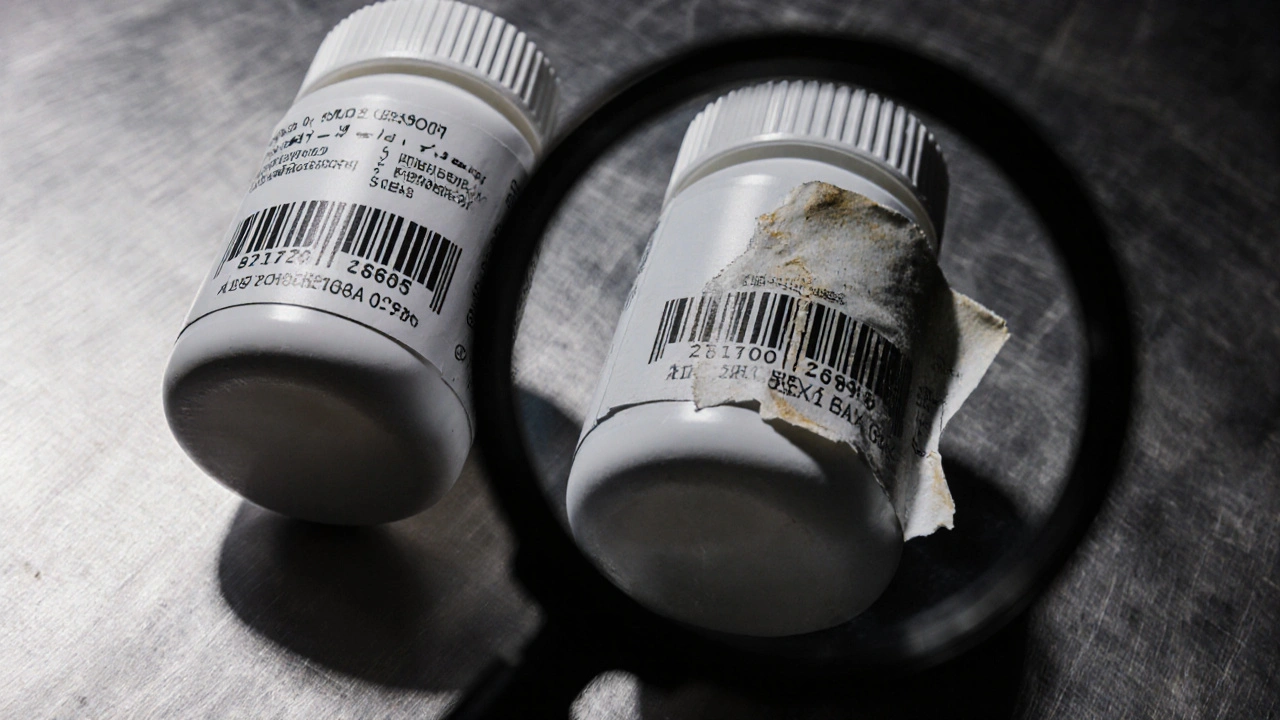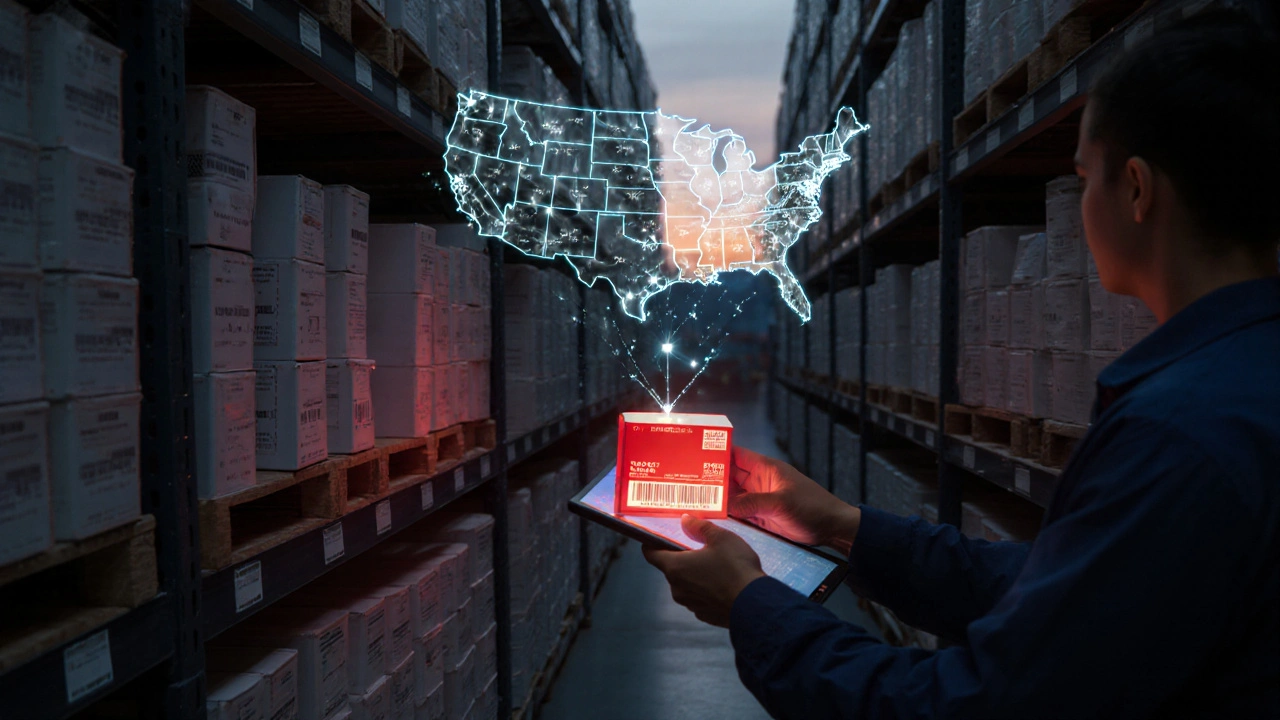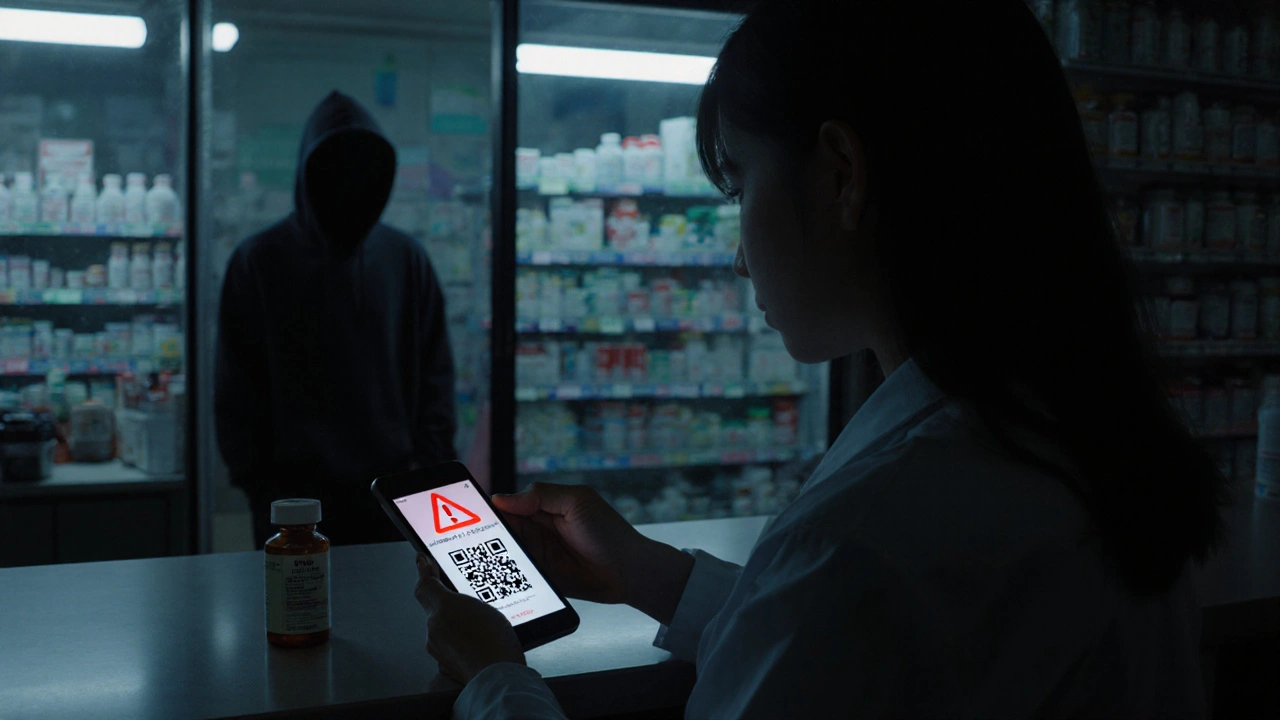Every pill you take could be fake. It sounds scary, but it’s not science fiction. In 2023, the FDA reported over 1,200 cases of counterfeit medications in the U.S. alone - some containing no active ingredient, others laced with toxic chemicals. The biggest weapon against this threat? Lot numbers and serial codes.
What Lot Numbers and Serial Codes Actually Do
A lot number ties together a group of pills made at the same time, in the same place, with the same ingredients. Think of it like a batch ID. If 10,000 bottles of blood pressure medicine were made on June 3, 2025, during the night shift at Plant 4, they all share the same lot number: maybe BP250603N4. That number tells you everything about that group - when it was made, where, and under what conditions.
Serial codes are different. They’re unique to each individual bottle or blister pack. No two are alike. A serial code might look like SR789223456789. It’s like a fingerprint for that one box of medicine. If a single bottle turns out to be contaminated or fake, regulators can pull just that one - not the whole warehouse.
Together, these two systems create a digital trail. From the raw chemical supplier, to the mixing machine, to the packaging line, to the pharmacy shelf - every step is recorded. If something goes wrong, you don’t guess. You trace.
Why This Matters for Fake Drugs
Counterfeiters don’t care about safety. They copy labels. They fill bottles with flour, chalk, or worse. They don’t have lot numbers. They don’t have serial codes. Or if they do, they’re fake - printed poorly, reused, or mismatched.
Here’s how track-and-trace stops them:
- Pharmacies scan the serial code before dispensing. If it’s not in the manufacturer’s database, the system flags it as invalid.
- Distributors check lot numbers during shipping. If a batch was recalled last week, any box with that lot number gets pulled before it leaves the warehouse.
- Regulators can cross-reference scanned codes with global databases. A fake drug from India? It won’t match the U.S. FDA registry.
In 2022, a major U.S. pharmacy chain stopped 87 fake opioid bottles in one week - all because their scanning system caught mismatched serial codes. That’s not luck. That’s the system working.
How the System Got So Strict
This wasn’t always the case. Before 2011, tracking was optional for most drugs. Then came the Drug Supply Chain Security Act (DSCSA). It’s a federal law that says every prescription drug in the U.S. must have a unique serial number by 2023. By 2025, every shipment must be electronically verified.
The trigger? Deaths. In 2008, fake heparin - a blood thinner - killed over 80 people in the U.S. The counterfeit version was laced with a toxic chemical. No lot numbers. No traceability. Just chaos.
Today, 91% of U.S. pharmaceutical manufacturers use full track-and-trace systems. The FDA now issues warning letters to companies that don’t. In 2023, 147 companies got flagged for poor lot recordkeeping. One got shut down.

Lot vs. Serial: When to Use Which
Not every drug needs a serial code. For low-risk, high-volume medicines like ibuprofen or antacids, lot numbers are enough. If a batch is bad, you recall the whole lot - maybe 50,000 bottles. It’s costly, but manageable.
For high-risk drugs - insulin, chemotherapy, injectables - serial codes are mandatory. Why? Because one bad bottle can kill. Serial tracking lets you isolate it. In 2024, a hospital in Ohio found one vial of contaminated insulin. Because of the serial code, they pulled only 12 bottles. Without it, they’d have recalled 2,000.
Here’s the breakdown:
| Feature | Lot Number | Serial Code |
|---|---|---|
| Scope | Group of products (batch) | One individual unit |
| Used for | Recalls, compliance, quality control | Individual verification, anti-counterfeiting |
| Required by law? | Yes, for all prescription drugs | Yes, for high-risk and controlled substances |
| Scanning accuracy | 99.7% with barcode | 99.8% with QR code |
| Cost to implement | $15,000-$40,000 for small manufacturers | $50,000-$120,000 (due to unique ID generation) |
What Happens When the System Fails
It’s not perfect. In 2023, a mid-sized pharmacy in Florida received 300 bottles of fake metformin. The lot number matched the real one. Why? Because the counterfeiters stole a real batch label and reused it.
But here’s the fix: serial codes. Each bottle had a unique code. The pharmacy’s system checked it against the manufacturer’s database. 298 codes were valid. Two weren’t. Those two were pulled. The rest? Safe.
The real failure isn’t the tech - it’s human error. If a warehouse worker manually types in a lot number instead of scanning it, typos happen. One wrong digit = wrong batch. That’s why 92% of successful systems require barcode or QR scanning. No typing. No guessing.
Another problem? Poor recordkeeping. Some small distributors still use paper logs. The FDA caught one company in 2024 with 73% of their lot records missing. They were fined $1.2 million.

What You Can Do as a Patient
You don’t need to be a tech expert. But you can protect yourself:
- Always buy from licensed pharmacies. Avoid online sellers with no physical address.
- If you’re handed a pill bottle, check the label. Is the lot number printed clearly? Is the serial code a barcode or QR code? Fake ones often look blurry or smudged.
- Use the FDA’s Drug Safety app. You can scan a serial code and get instant verification - no internet needed.
- Report anything suspicious. The FDA’s MedWatch program takes reports from patients. One report led to the shutdown of a fake Viagra ring in 2023.
The Future: AI, Blockchain, and Real-Time Tracking
The next leap? Real-time monitoring. Some drug makers are now putting tiny sensors in shipping containers that track temperature and humidity. If insulin gets too warm during transit, the system flags it - and the lot number is automatically quarantined.
Blockchain is being tested too. Instead of one company controlling the data, multiple players - manufacturer, distributor, pharmacy - each hold a copy. Tampering becomes impossible.
By 2027, the EU will require every medicine to have a digital passport - a permanent record tied to its serial code. That means if you buy a drug in Germany, you can trace it back to the factory in India - and verify it’s real.
It’s not about control. It’s about trust. And trust starts with a number - one that can’t be faked.
How to Know Your Medicine Is Safe
Here’s your quick checklist:
- Is the packaging sealed? No torn foil, no broken caps.
- Is the lot number clearly printed? Not handwritten, not faded.
- Is there a barcode or QR code? If not, it’s suspicious.
- Can you scan the code and get a match? Use the FDA app or ask your pharmacist to check.
- Does the medicine look, smell, or taste different? Report it.
If you’re ever unsure - don’t take it. Call your pharmacist. They’re trained to spot fakes. And they’re your first line of defense.


Paige Lund
November 20, 2025 AT 05:07Wow. So now I need to scan my ibuprofen like it’s a boarding pass? Next they’ll make me show ID to buy aspirin.
Michael Salmon
November 21, 2025 AT 03:47Let’s be real-this whole system is just corporate theater. The FDA doesn’t shut down fake drug rings; they just fine them $1.2 million and let them keep operating. Meanwhile, people still die from counterfeit insulin because the ‘system’ takes weeks to catch up. This isn’t safety-it’s liability management dressed up in QR codes.
Timothy Reed
November 21, 2025 AT 06:49This is one of the most important public health stories that rarely gets attention. The fact that we can now trace a single vial of medicine back to its manufacturing batch-and isolate contamination without recalling thousands of units-is a quiet miracle of engineering and regulation. Kudos to the teams who built this infrastructure under tight deadlines and complex compliance demands.
Christopher K
November 23, 2025 AT 05:38Oh wow, the U.S. finally got around to doing what every other developed country did 15 years ago. Meanwhile, China’s drug supply chain is more transparent than ours. And we wonder why people buy meds off Instagram? It’s because our system is a glorified spreadsheet with a barcode sticker slapped on it.
harenee hanapi
November 23, 2025 AT 18:50I used to work at a pharmacy, and let me tell you-this system is a nightmare. One time, a woman came in crying because her insulin didn’t scan. She had been diabetic for 20 years. The system said ‘invalid.’ Turns out the barcode was smudged from her purse. They made her wait 47 minutes while they called the manufacturer. She left without her meds. I cried too. This isn’t safety-it’s bureaucracy with a digital face.
Christopher Robinson
November 25, 2025 AT 13:52Big thanks to the folks who actually built this system-it’s easy to hate on tech, but imagine being the engineer who had to design a way to generate 10 billion unique serial codes without overlap. 🙌 Also, the FDA app? Game-changer. I scanned my blood pressure med last week and it popped up with the exact batch, expiration, and even the warehouse it came from. Felt like a spy. 🔍💊
James Ó Nuanáin
November 26, 2025 AT 10:16While the American pharmaceutical supply chain has made commendable strides toward traceability, one cannot help but observe that the European Union’s Digital Medicines Passport initiative-set to fully operationalize by 2027-represents a superior, more holistic, and interoperable paradigm. The U.S. system remains fragmented, reliant on proprietary databases, and lacks the pan-European standardization that ensures true global traceability. One must ask: why are we playing catch-up?
Nick Lesieur
November 27, 2025 AT 19:36lol so now i gotta scan my tylenol? what next? do i need a fingerprint to buy ibuprofen? this whole thing is just a scam to make big pharma look good while small pharmacies go bankrupt trying to afford scanners. also i typoed ‘scannner’ above and the system still worked so who cares